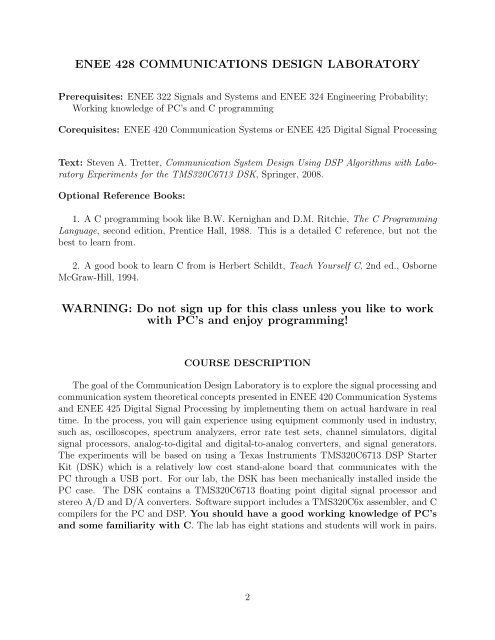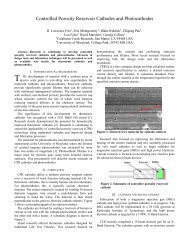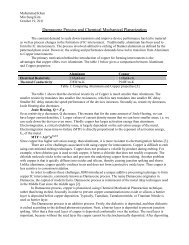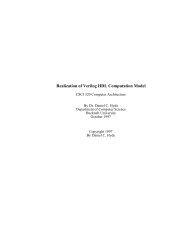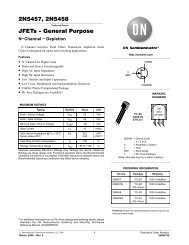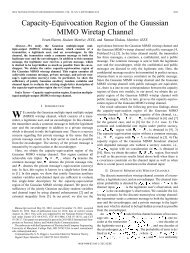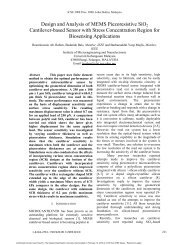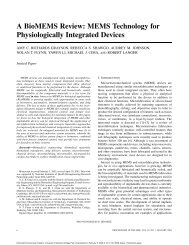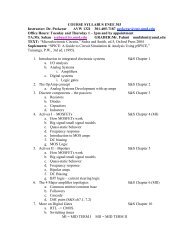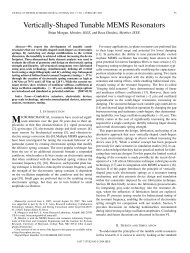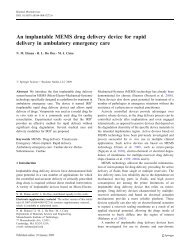ENEE 428 COMMUNICATIONS DESIGN LABORATORY - ECE
ENEE 428 COMMUNICATIONS DESIGN LABORATORY - ECE
ENEE 428 COMMUNICATIONS DESIGN LABORATORY - ECE
You also want an ePaper? Increase the reach of your titles
YUMPU automatically turns print PDFs into web optimized ePapers that Google loves.
<strong>ENEE</strong> <strong>428</strong> <strong>COMMUNICATIONS</strong> <strong>DESIGN</strong> <strong>LABORATORY</strong><br />
Prerequisites: <strong>ENEE</strong> 322 Signals and Systems and <strong>ENEE</strong> 324 Engineering Probability;<br />
Working knowledge of PC’s and C programming<br />
Corequisites: <strong>ENEE</strong> 420 Communication Systems or <strong>ENEE</strong> 425 Digital Signal Processing<br />
Text: Steven A. Tretter, Communication System Design Using DSP Algorithms with Laboratory<br />
Experiments for the TMS320C6713 DSK, Springer, 2008.<br />
Optional Reference Books:<br />
1. A C programming book like B.W. Kernighan and D.M. Ritchie, The C Programming<br />
Language, second edition, Prentice Hall, 1988. This is a detailed C reference, but not the<br />
best to learn from.<br />
2. A good book to learn C from is Herbert Schildt, Teach Yourself C, 2nd ed., Osborne<br />
McGraw-Hill, 1994.<br />
WARNING: Do not sign up for this class unless you like to work<br />
with PC’s and enjoy programming!<br />
COURSE DESCRIPTION<br />
The goal of the Communication Design Laboratory is to explore the signal processing and<br />
communication system theoretical concepts presented in <strong>ENEE</strong> 420 Communication Systems<br />
and <strong>ENEE</strong> 425 Digital Signal Processing by implementing them on actual hardware in real<br />
time. In the process, you will gain experience using equipment commonly used in industry,<br />
such as, oscilloscopes, spectrum analyzers, error rate test sets, channel simulators, digital<br />
signal processors, analog-to-digital and digital-to-analog converters, and signal generators.<br />
The experiments will be based on using a Texas Instruments TMS320C6713 DSP Starter<br />
Kit (DSK) which is a relatively low cost stand-alone board that communicates with the<br />
PC through a USB port. For our lab, the DSK has been mechanically installed inside the<br />
PC case. The DSK contains a TMS320C6713 floating point digital signal processor and<br />
stereo A/D and D/A converters. Software support includes a TMS320C6x assembler, and C<br />
compilers for the PC and DSP. You should have a good working knowledge of PC’s<br />
and some familiarity with C. The lab has eight stations and students will work in pairs.<br />
2


